 |
Online Astronomy eText: Stars and Stellar Systems
The Carina Nebula
|
Page last updated Mar 15, 2022
Added this note: Some of the links are now broken due to reorganization of the target websites, and finding their new locations has proven difficult. I am working on this and will fix the problem as soon as possible.
NGC 3372, the Carina Nebula, a star forming region several hundred light years across and 7500 light years away, contains dozens of interesting and spectacular objects, including η Carinae, the Keyhole Nebula, various clusters of stars, reflection and emission nebulae, proplyds and pillars, as shown by the numerous images posted below, starting with the public domain image from Wikipedia immediately below. (Initial posting of this page February 27, 2010; updates started 2020)
|
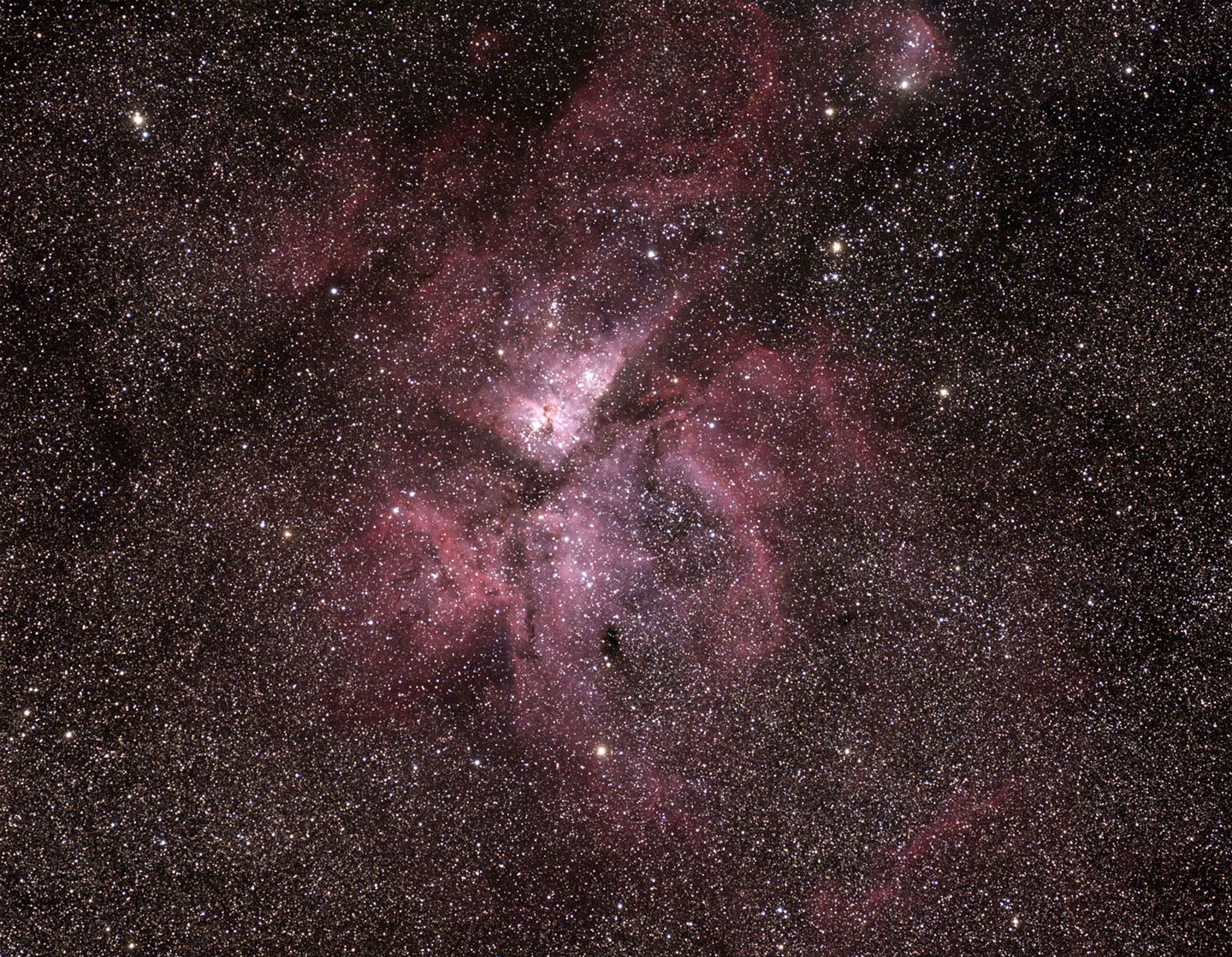
Below: A 1975 image of the Nebula (NSF/AURA, NOAO) |

Below: A slight closeup of the nebula. All the remaining images are within the tilted rectangular region at the top of the image. (K. Weis & W. J. Duschl (ITA, U. Heidelberg), apod990719) |
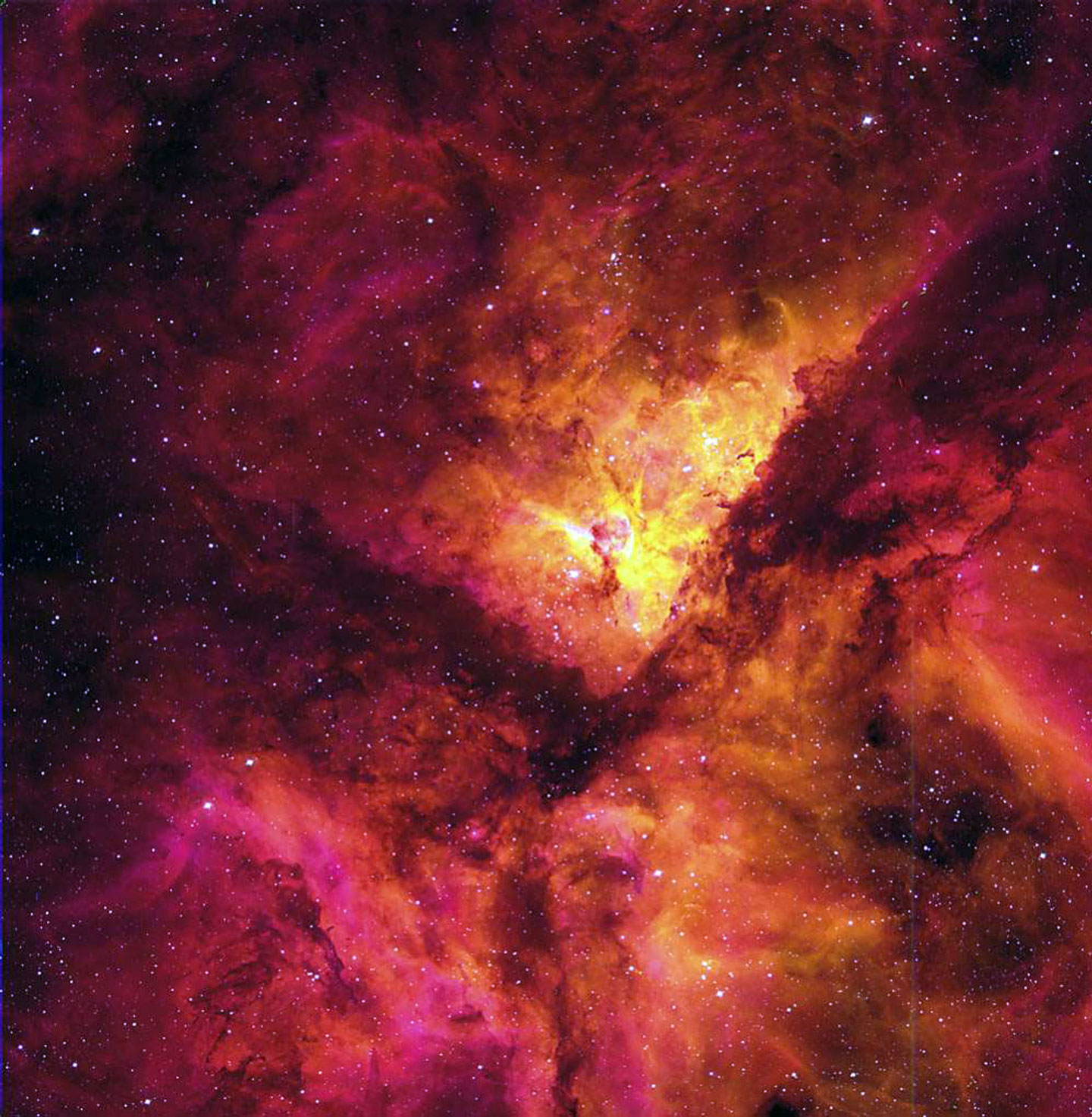
Below: The northern portion of the nebula in more detail. The bright star near the lower vertex of the rectangular region is η Car, and the irregularly shaped more or less vertical dark region to its right is the Keyhole Nebula. The scattering of stars just below and to the left is open cluster Trumpler 16, while the compact grouping of stars near the pillars and clouds of dust at upper right is open cluster Trumpler 14. (European Southern Observatory (ESO), apod090216) |

Below: A 23 by 15 arcmin wide region of the Keyhole Nebula and η Car in infrared, revealing stars normally hidden or reddened by dust. As in the image above the bright star near bottom left is η Car, the scattering of stars just below that is open cluster Trumpler 16, and the compact grouping of stars near the pillars and clouds of dust at upper right is open cluster Trumpler 14. But while the Keyhole Nebula is a dramatic feature in the visible-light image above, it essentially disappears in the infrared image. (Image Credit ESO/T. Preibisch) |
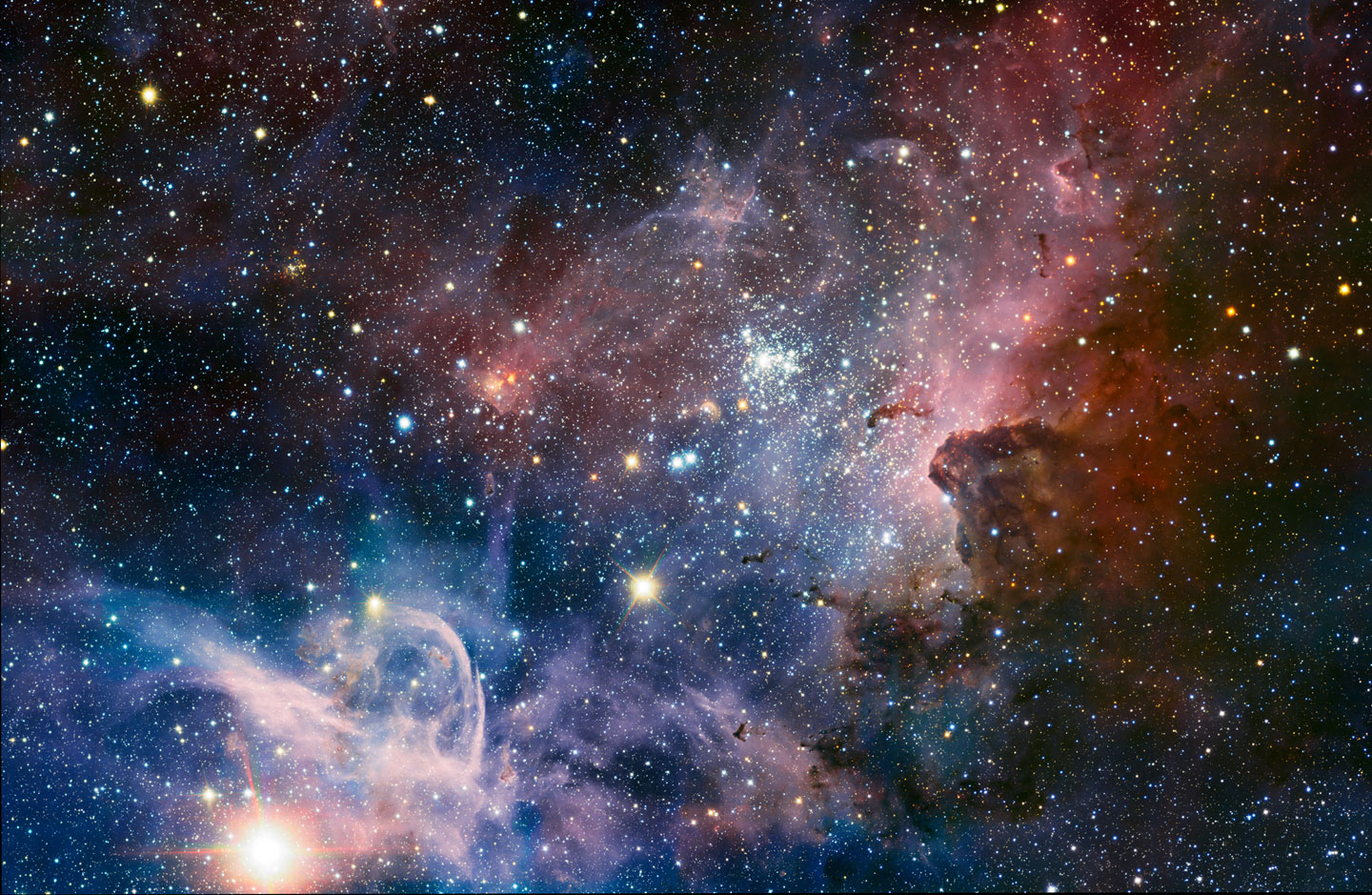
Below: A 3.5 by 3.5 arcmin wide image of Trumpler 14. Most of the images on this page are aligned according to how they were presented in one press release or another, but I have rotated this one so that north is on the top, and east to the left (as we would see things in the sky if they were visible to our south, as Carina is for Northern Hemisphere observers). One of the largest gatherings of hot, massive and bright stars in the Milky Way, this cluster houses some of the most luminous stars in our galaxy. The dark patch just northeast (up and to the left) of the brightest star in the cluster is a Bok globule, a region of gas and dust so dense that it is completely opaque to visible light and is silhouetted against the brilliantly lit background of gas and stars. (Image Credit NASA & ESA, Jesús Maíz Apellániz (Centro de Astrobiología, CSIC-INTA, Spain)) |
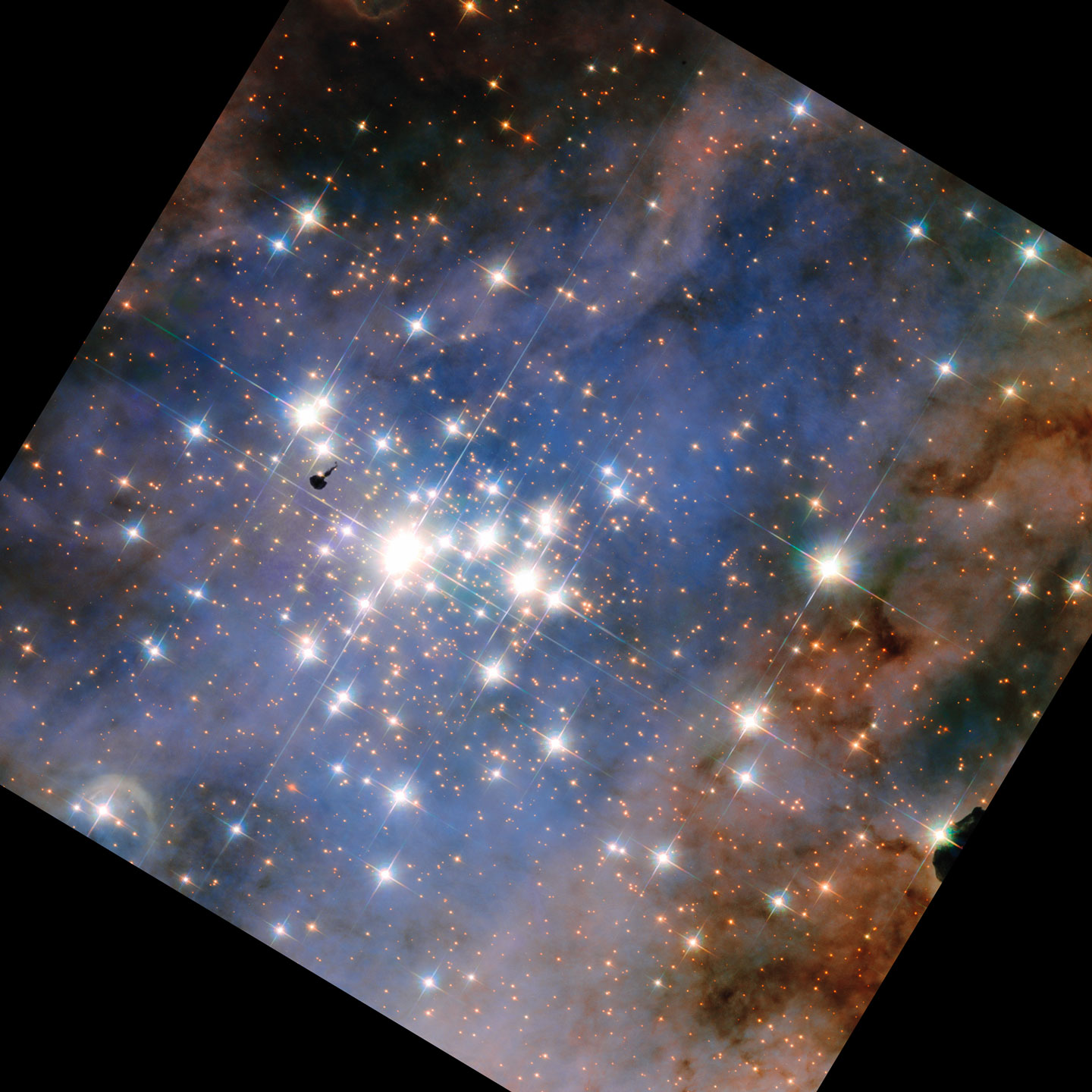
Below: A large-scale mosaic of the region near the Keyhole. (IDA/Danish 1.5 m/R.Gendler, J-E. Ovaldsen, C. Thöne, and C. Feron ESO) |

Immediately below a panoramic composite of multiple HST images of the Keyhole Nebula region (NASA, ESA, N. Smith (U. California, Berkeley) et al., and The Hubble Heritage Team (STScI/AURA), apod080528); and below that an annotated version of the same image. (Hubble Heritage Project) |
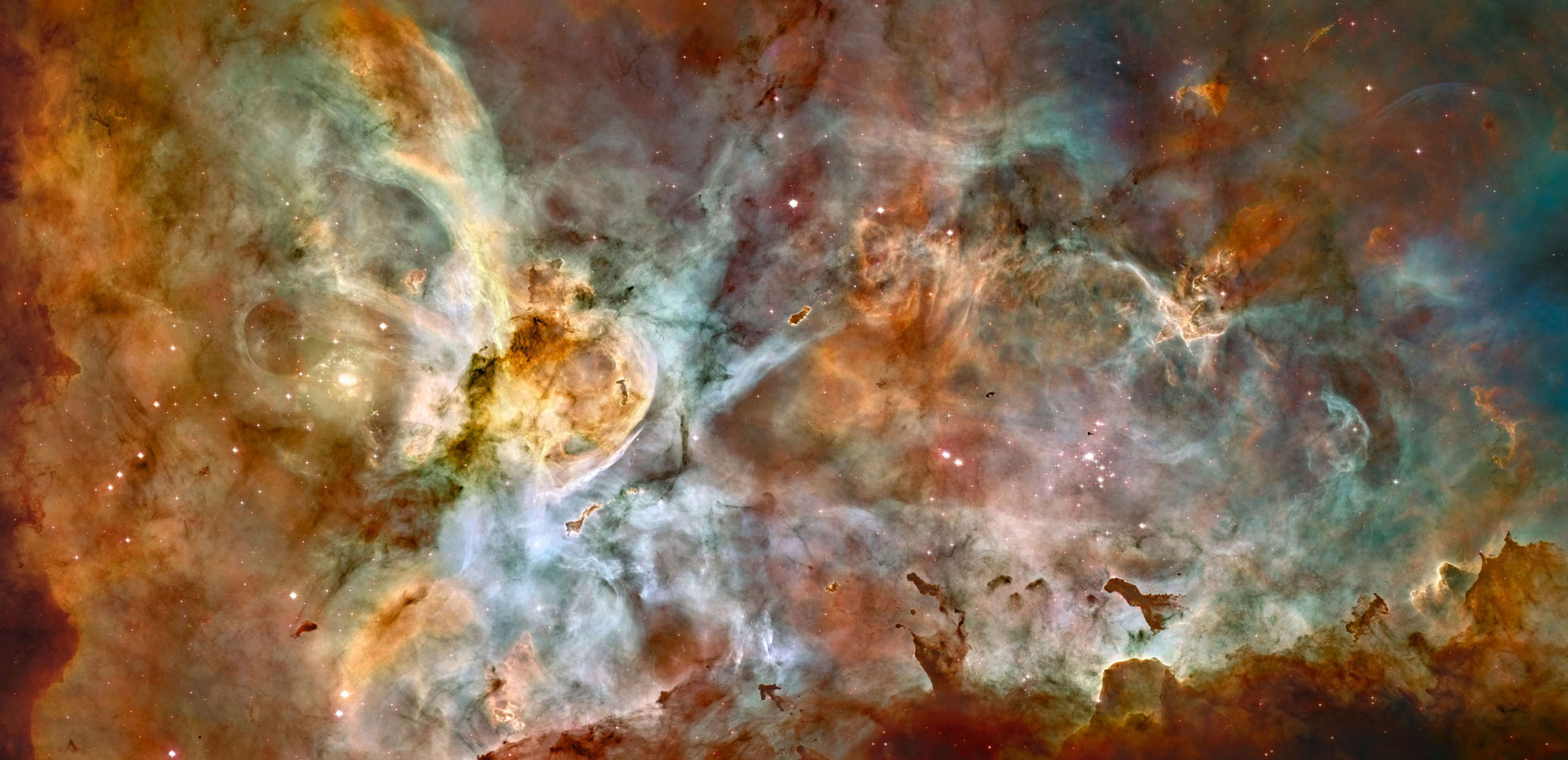

Below, a portion of the Keyhole (the dark mass on the left), and on the right, one of many dense molecular clouds of gas and dust being simultaneously compressed by the hot gases surrounding them, and ionized by the intense ultraviolet radiation from nearby stars. Within a few million years most of the gases in the molecular cloud will be scattered and mixed with its surroundings. But stars now forming in its interior will gleam brightly once their dusty shroud is removed. (Hubble Heritage Team (STScI/AURA), N. Walborn (STScI) & R. Barbß (La Plata Obs.), NASA) |

Below, the region below the previous image. The bright stars at the bottom are part of open cluster Trumpler 16, and include some of the most massive stars known in our galaxy. However, determining the mass of such stars is difficult, as they have often turned out to be multiple star systems, which only appear to be a single star. The brightest star (at bottom right), WR 25, was recently shown to consist of at least two stars, and the brightest one to its left, Tr16-244, turned out to be three separate stars. As a result, the high masses previously estimated for these stars have been considerably reduced; but even with that reduction, WR 25 is probably 50 times the mass of the Sun, and hundreds of thousands of times brighter. (The bottom of this image lies just below the HST panorama, but the ESO panorama shows this region in its entirety. Use the orientation of the molecular cloud at the top of this image to compare it to the panoramas.) (NASA, ESA, and J. Maíz Apellániz (Instituto de Astrofísica de Andalucía, Spain)) |
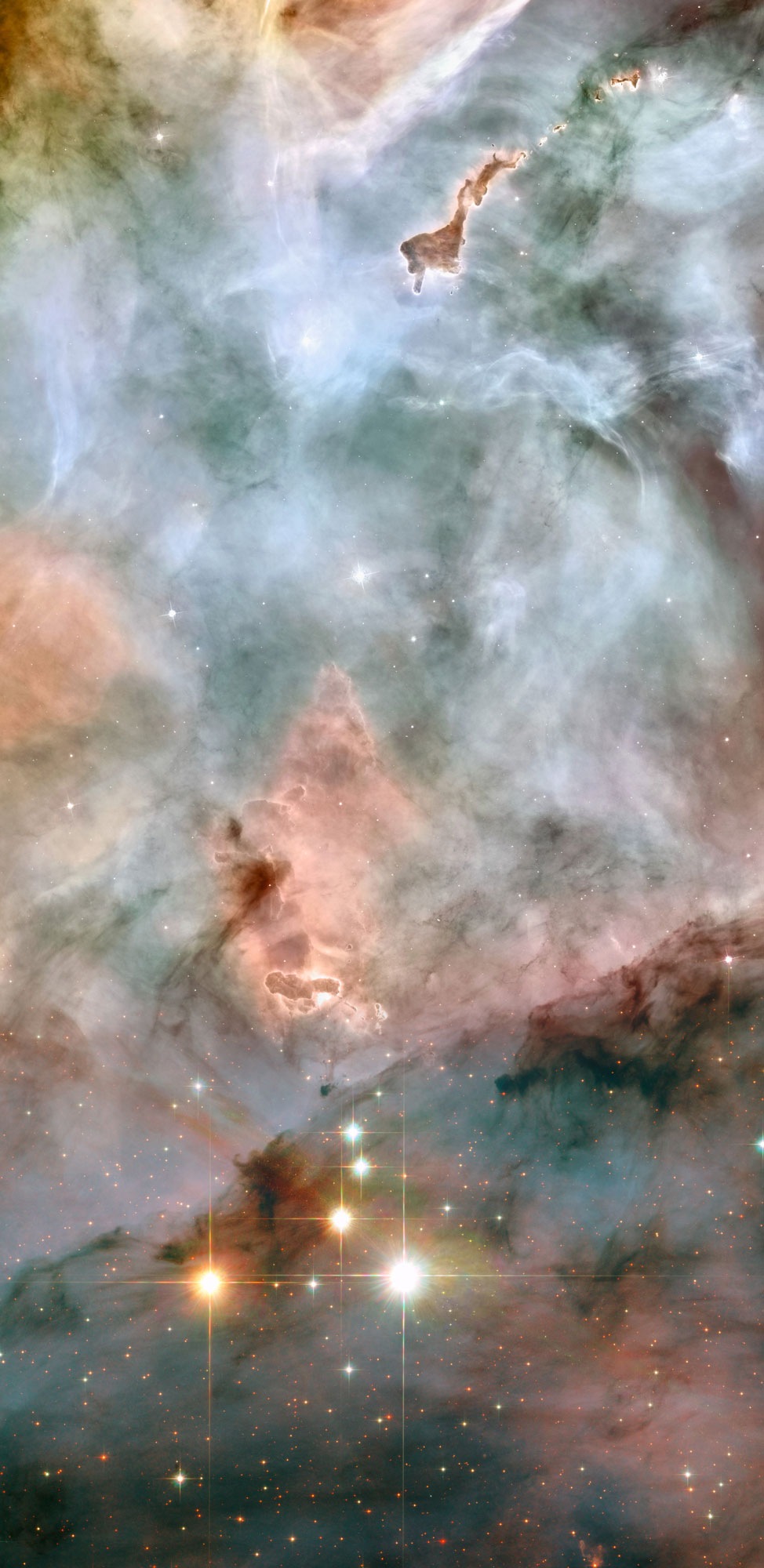
Below, a comparison of visible and infrared images of a region less than 1% of the diameter and 1/100th of 1% of the overall size of the Carina Nebula, as an example of the tremendous complexity of the nebula, and the enormous difference in how we "see" that complexity in different parts of the electromagnetic spectrum. The image consists of two frames of the region near RA 10 43 51, Dec -59 55 21. The upper frame, taken in visible light, shows a (false-color) bluish background of glowing gas (lit up by hot, bright stars outside the field of view) surrounding a 3 light year wide pillar of gas and dust shrouding other hot bright young stars inside the pillar. Though those stars are not visible a filamentary structure is faintly visible crosswise to the pillar, which is believed to be created by gas blown away from one of the stars at nearly 850 thousand miles per hour. The lower frame, taken in infrared radiation which passes right through the gas, displays a nearly black background filled with thousands of bright stars which were barely visible (if at all) in the visible light image. Inside the still faintly visible pillar are several stars substantially reddened by the thick clouds of gas and dust surrounding them. The one which lies nearly on the filamentary structure is believed to be responsible for its high velocity. (Image Credit NASA, ESA, and the Hubble SM4 ERO Team)
 |
|
|